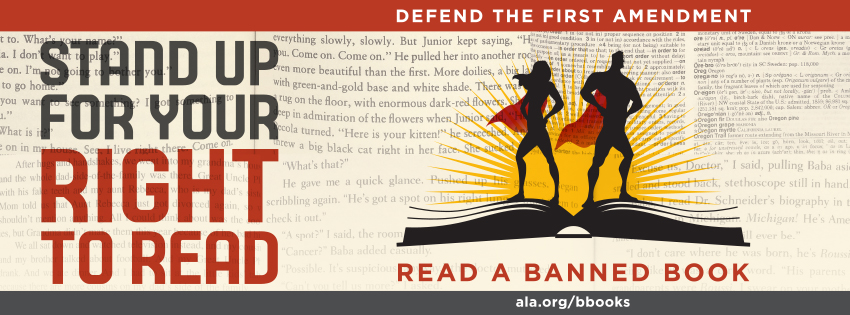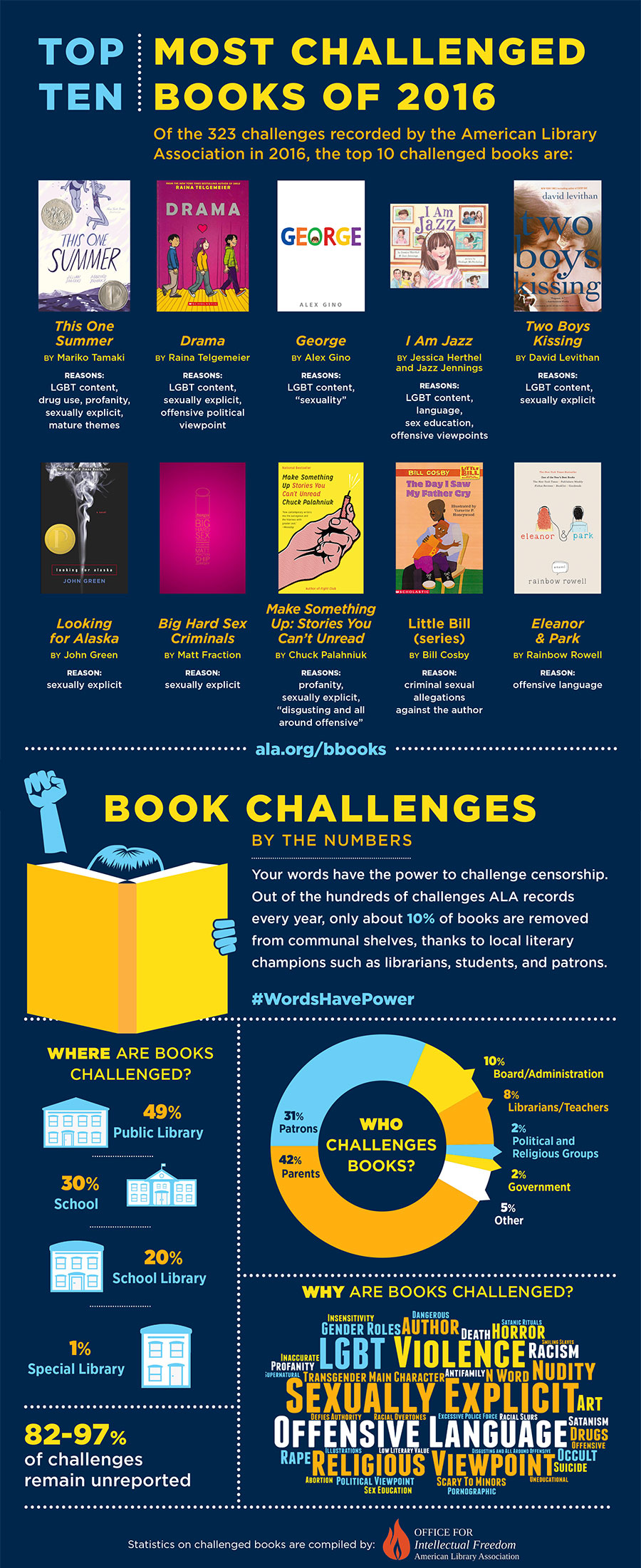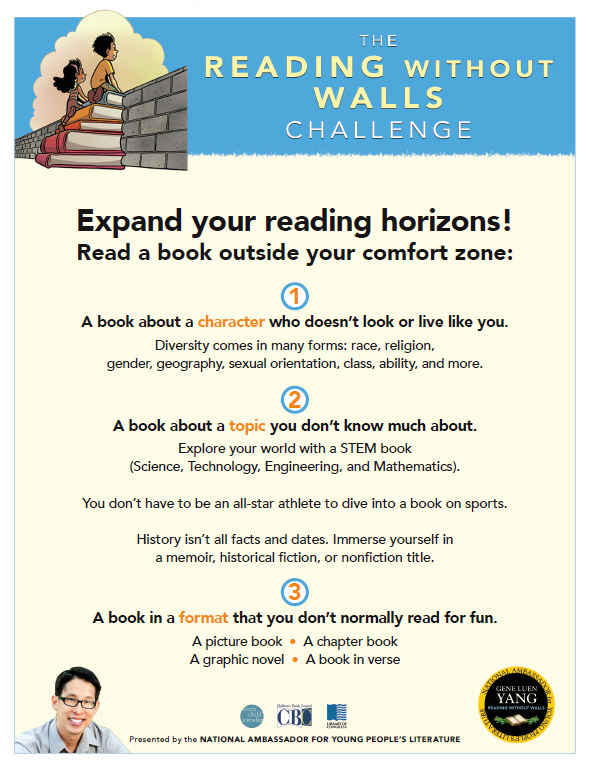Today, the American Library Association released its State of America’s Libraries Report, an annual report released during National Library Week.
It’s not easy being a librarian, and it’s gotten even more difficult in the current Zeitgeist of fake news, polarization, and intolerance.
First, the White House has proposed cutting the entire budget of the Institute of Museum and Library Services,
which spent most of its $230 Million budget in 2016 “to inspire libraries and museums to advance innovation, lifelong learning, and cultural and civic engagement. We provide leadership through research, policy development, and grant making.”
[That $230 Million? 0.00006% of the national budget in 2016.]
10% of traditional schools, and 51% of charter schools do not have a library.
In 2015, students protested when the Chicago Public Schools cut librarian staffing across the school district.
Then there’s the constant criticisms and challenges every library faces from critical constituents, who complain about how their tax dollars are being abused and misused. Sometimes, it’s normal, everyday customer service complaints about … well, everything. [If you want to experience it directly, go read Unshelved, a webcomic set in a library, by Gene Ambaum and Bill Barnes. Like Dilbert, it is frequently “based on a true story”. Yes, raw bacon used as a bookmark really happened.]
But sometimes, those complaints escalate, when library patrons find content which offends, and which those patrons feel shouldn’t be in a library’s collection. When books are challenged, the American Library Association’s Office for Intellectual Freedom provides expertise, and supports Banned Books Week every September.
As part of their annual report on libraries, ALA has released a list of the most challenged books of 2016.
As in past years, graphic novels have once again made the Top Ten list of challenged books.
The full list:
1. “This One Summer,” written by Mariko Tamaki and illustrated by Jillian Tamaki
2. “Drama,” written and illustrated by Raina Telgemeier
3. “George,” written by Alex Gino
4. “I Am Jazz,” written by Jessica Herthel and Jazz Jennings, and illustrated by Shelagh McNicholas
5. “Two Boys Kissing,” written by David Levithan
6. “Looking for Alaska,” written by John Green
7. “Big Hard Sex Criminals,” written by Matt Fraction and illustrated by Chip Zdarsky
8. “Make Something Up: Stories You Can’t Unread,” written by Chuck Palahniuk
9. Little Bill (series) written by Bill Cosby and illustrated by Varnette P. Honeywood
10. “Eleanor & Park,” written by Rainbow Rowell
As noted below, the reasons are mostly due to sexual content and gender identity.
Representative challenges.Drama, by Raina Telgemeier, is second on the OIF’s most frequently challenged list. The alarming pattern is that all of the challenges occurred in schools, and in every case the title was in fact withdrawn. Only one of the cases is public; the rest of them requested confidentiality, and one indicated that despite the popularity of the author for her middle school library readers, she was now “afraid” to buy books from Telgemeier. [p.18]
The most shocking statistic is not that there were 323 challenges to libraries last year, but that 82-97% of challenges go unreported. [I like to think I’m well-connected with librarians and comics creators on Facebook, and I didn’t hear much about potential censorship issues last year.]
So what can you do?
You, can, of course, donate to the Comic Book Legal Defense Fund, the American Civil Liberties Union, and many other organizations who fight for intellectual freedom, and against censorship. You can volunteer, you can advocate, you can support your local library as a taxpayer and a voter.
If that’s too much, you can become a reader (or a watcher, or a listener. Libraries also offer DVDs, CDs, and audiobooks.) Or, as we librarians like to call you, a patron. A library patron. And…unlike the patrons of the Italian Renaissance, it won’t cost loads of money. (Yes, some of it comes from your taxes, but ’tis a pittance, and you’ll receive a lifetime membership card!) You’ll even have access to expert advice, at no extra charge!
Thanks to lots of comics fans becoming librarians [ahem], and lots of librarians becoming comics fans [Welcome!], graphic novels are a welcome addition to most libraries! (FREE COMICS!) We even have a cartoonist as the current Young People’s Literature Ambassador, Gene Luen Yang! (That’s right! A cartoonist! Encouraging kids to read comics and other stuff!)
He, of course, is an awesome choice, and encourages readers to explore books of diverse voices, genres, and formats via his “Reading Without Walls Challenge” this month!
[Me, I checked off #1 by reading the All-New Ghost Rider graphic novels from Marvel, set in the barrios of Los Angeles. #2 I do all the time, but not really in books, just online. And #3 is almost impossible, as I read any and all formats for fun! Cereal boxes, sidewalk plaques, subway ads…]
Even if you don’t want to read outside your comfort zone, you should still visit your local library! Lots of free books (including graphic novels!), newspapers, magazine, ebooks, and YES even free Wi-Fi! (Some even offer ukuleles, 3D printing, board games, video games, LEGOs, power tools, sewing machines…)
You should also check out books, because libraries use that circulation data to determine what’s popular, but also to justify library budgets. (So many people visited; so many books circulated; so many questions answered online, in person, on the phone…) Why do you think libraries have such large Romance and Cookbook sections? Because people want those books!
Also, let the librarians and support staff know how much you appreciate their help. What they do is customer service mixed with public service, which takes the normal stress of working retail or food service, and adds the accelerant of “your tax dollars at work” to fuel patron dissatisfaction. Like much of public service jobs, librarians rarely get a “thank you for your service” from the general public, even though they are on the front lines of so many battles (unemployment, homelessness, illiteracy, advocacy).
Finally…
Despite all the doom and gloom, libraries continue to be a shining beacon for all. Here are some examples of how libraries transform lives:











Interesting article! Thank you for sharing them! I hope you will continue to have similar posts to share with everyone! I believe a lot of people will be surprised to read this article!
Comments are closed.